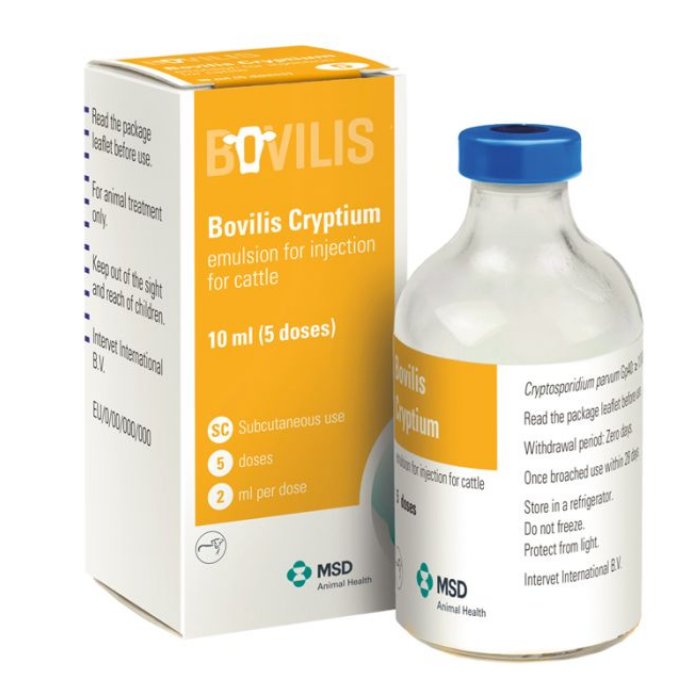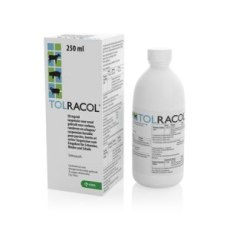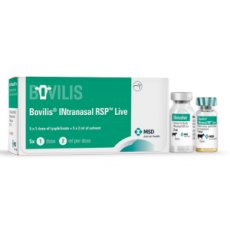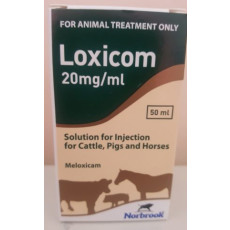Bovilis Cryptium POM-V (Fridge)
Product Description
Bovilis Cryptium
Target Species
Cattle (pregnant heifers and cows).
Indications for use
For active immunisation of pregnant heifers and cows to raise antibodies in their colostrum against Gp40 of Cryptosporidium parvum, intended for passive immunisation of calves to reduce clinical signs (i.e. diarrhoea) caused by C. parvum.
Newborn calves:
Onset of immunity: Passive immunity commences from the start of colostrum feeding.
Duration of immunity: In calves that receive colostrum and transition milk as indicated and which were challenged at birth, passive immunity has been demonstrated until 2 weeks of age.
Contraindications
None.
Special warnings for each target species
Vaccinate healthy animals only.
Feeding of calves
The protection of calves depends on adequate ingestion of colostrum and transition milk from vaccinated cows. It is recommended that all calves are fed colostrum and subsequent transition milk during the first 5 days of life. At least 3 litres of colostrum should be fed within the first 6 hours after birth.
To achieve optimum results a whole herd vaccination policy should be adopted.
Farm management should aim at reduction of exposure to C. parvum.
Special precautions for use
Administration in the ischiorectal fossa has resulted in local painful chronic granulomatous reactions up to 15 cm in diameter and in abscess formation (multiple small abscesses up to 1 cm in diameter at post mortem 15 weeks after the first vaccination and 11 weeks after second vaccination) in one out of two necropsied cows (the study included 9 cows).
Administration in the dewlap can give rise to extensive chronic inflammatory reactions up to 30 cm in diameter which can lead to painful local reactions with possible persistent impact on cow welfare.
Operator warnings
To the user:
This veterinary medicinal product contains mineral oil. Accidental injection/self-injection may result in severe pain and swelling, particularly if injected into a joint or finger, and in rare cases could result in the loss of the affected finger if prompt medical attention is not given. If you are accidentally injected with this veterinary medicinal product, seek prompt medical advice even if only a very small amount is injected and take the package leaflet with you. If pain persists for more than 12 hours after medical examination, seek medical advice again.
To the physician:
This veterinary medicinal product contains mineral oil. Even if small amounts have been injected, accidental injection with this product can cause intense swelling, which may, for example, result in ischaemic necrosis and even the loss of a digit. Expert, PROMPT, surgical attention is required and may necessitate early incision and irrigation of the injected area, especially where there is involvement of finger pulp or tendon.
Adverse Reactions
Cattle (pregnant heifers and cows):
|
Very common (>1 animal / 10 animals treated): |
Injection site swelling1, injection site pain, injection site warmth, injection site granuloma. Elevated temperature2. |
|
Uncommon (1 to 10 animals / 1,000 animals treated): |
Muscle inflammation3. Injection site abscess4. |
1 Mean size up to 14 cm, maximum size up to 40 cm, swellings reduce in size over time, but may persist as chronic granulomatous inflammation extending from the injection site for at least 125 days.
2 Mean increase up to 1 °C with a maximum of 1.8 °C, returning to normal on ultimately the 2nd day after vaccination.
3 Granulomatous haemorrhagic inflammatory reaction in dermal and subdermal tissues with inflammation extending into the underlying muscular tissue.
4 An abscess up to 1 cm in diameter detected in the neck after the 3rd vaccination.
Reporting adverse events is important. It allows continuous safety monitoring of a veterinary medicinal product. Reports should be sent, preferably via a veterinarian, to either the marketing authorisation holder or the national competent authority via the national reporting system. See the package leaflet for respective contact details.
Use during pregnancy or lactation
Pregnancy and lactation:
This veterinary medicinal product is intended for use in the third trimester of pregnancy.
Interactions
Safety and efficacy data are available which demonstrate that this vaccine can be administered on the same day but not mixed with Bovilis Rotavec Corona. The vaccines should be given at different sites.
The product literature of Bovilis Rotavec Corona should be consulted before administration. Different routes of administration should be respected.
No information is available on the safety and efficacy of this vaccine when used with any other veterinary medicinal product except the product mentioned above. A decision to use this vaccine before or after any other veterinary medicinal product therefore needs to be made on a case-by-case basis.
Amounts to be administered and administration route
Subcutaneous use.
Administer the vaccine in the side of the neck.
Allow the vaccine to reach room temperature before use.
Shake well before and occasionally during use to ensure homogeneity of the vaccine prior to administration.
Common aseptic procedures should be used during vaccination.
Only sterile syringes and needles should be used.
Use of a multidose applicator is recommended when vaccinating multiple animals.
One dose: 2 ml
Primary vaccination consists of 2 doses, 4 to 5 weeks apart, in the third trimester of pregnancy. To be completed at least 3 weeks before calving. These doses are preferably administered at different sides of the animal.
Revaccination consists of 1 dose in the third trimester of each next pregnancy. To be completed at least 3 weeks before calving.
Overdose
Following the administration of an overdose, no adverse reactions other than those mentioned in section “Adverse Reactions” occur.
Withdrawal periods
Zero days.
Loyalty Scheme
Earn up to 480 loyalty points with this product.











Share
Bovilis Cryptium POM-V (Fridge)
Facebook Twitter Email Pinterest Telegram